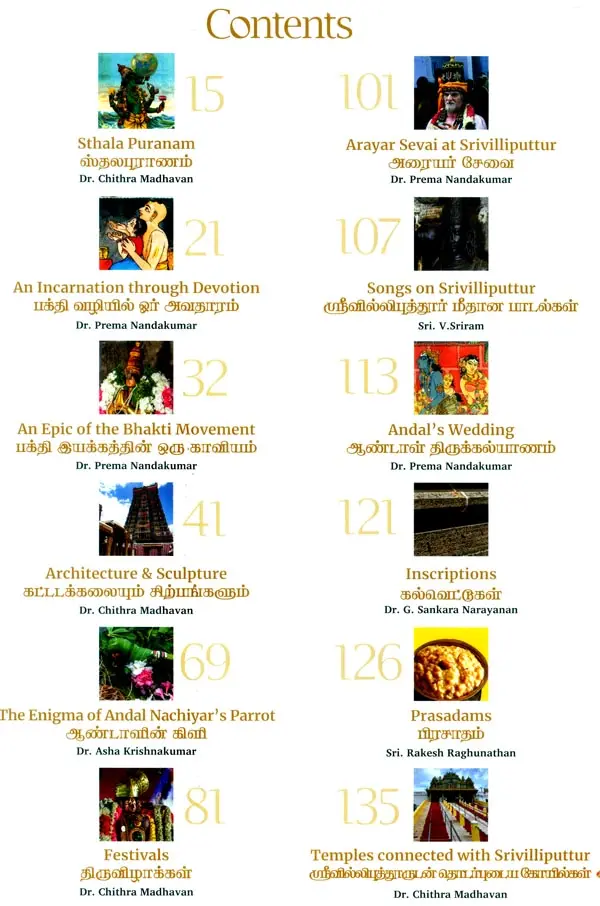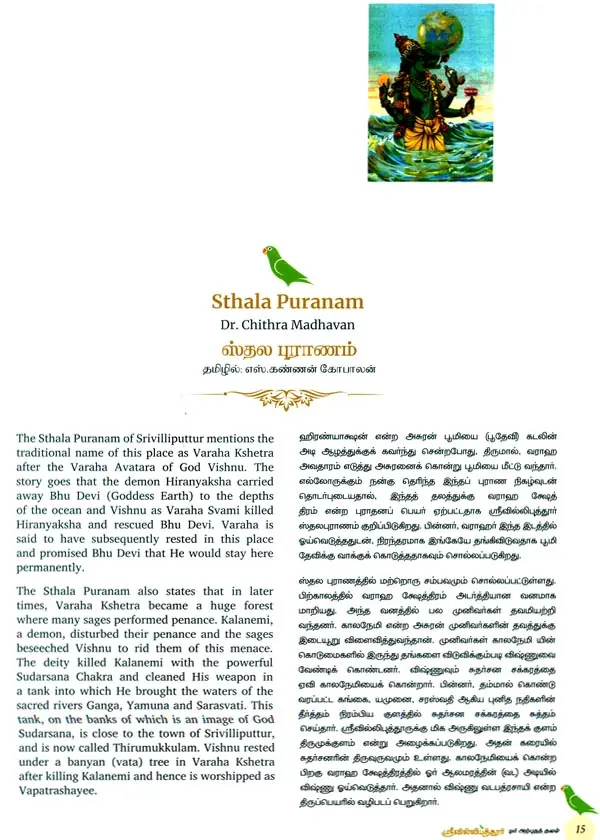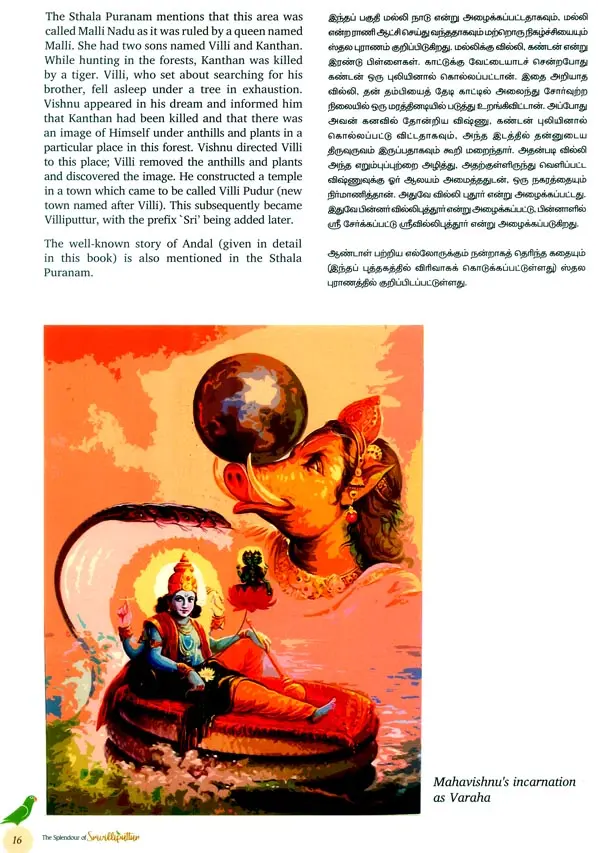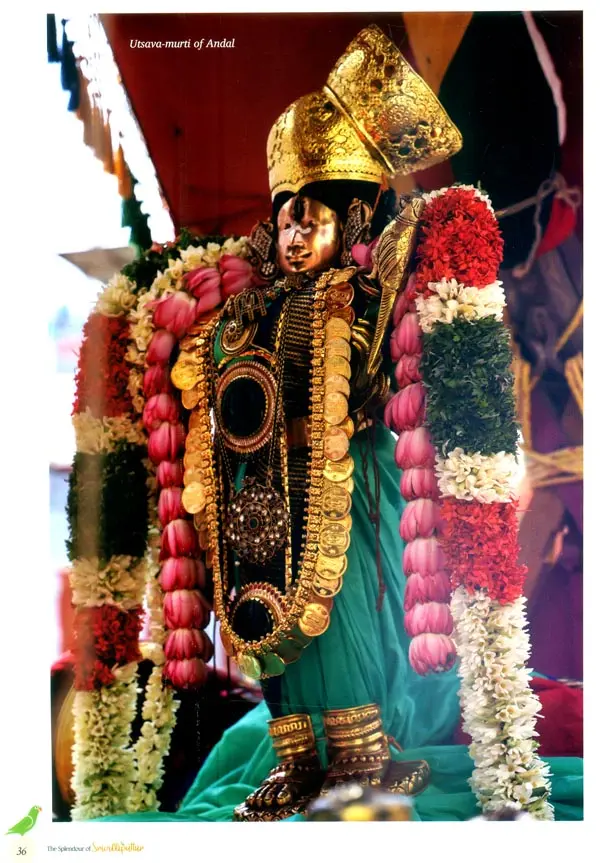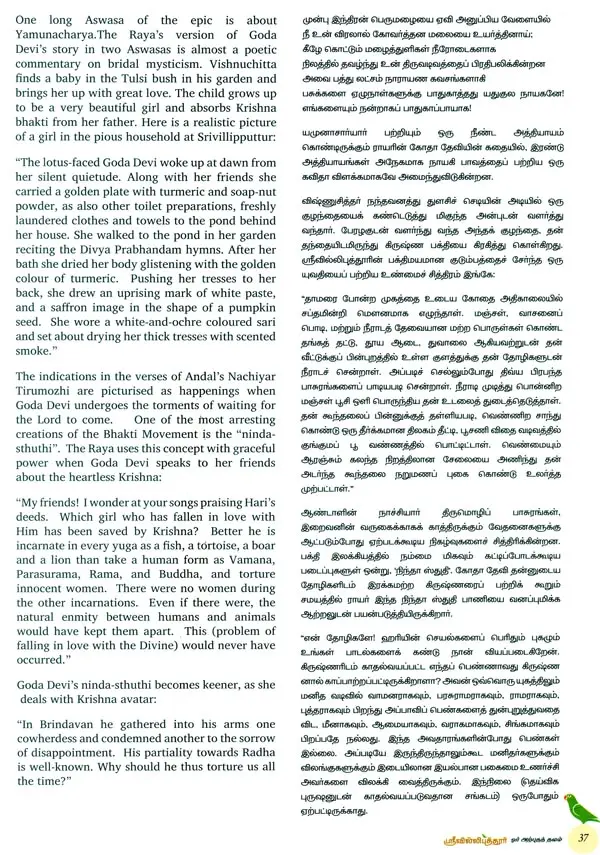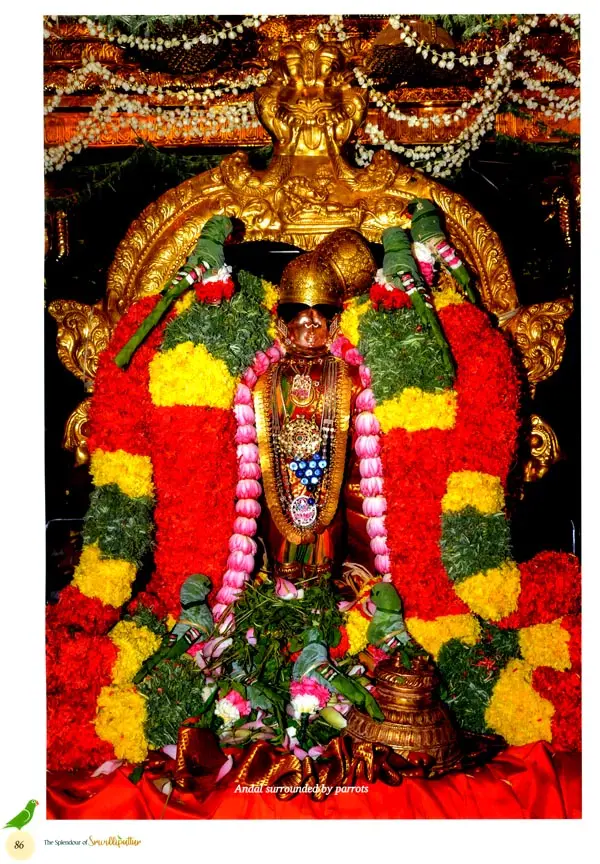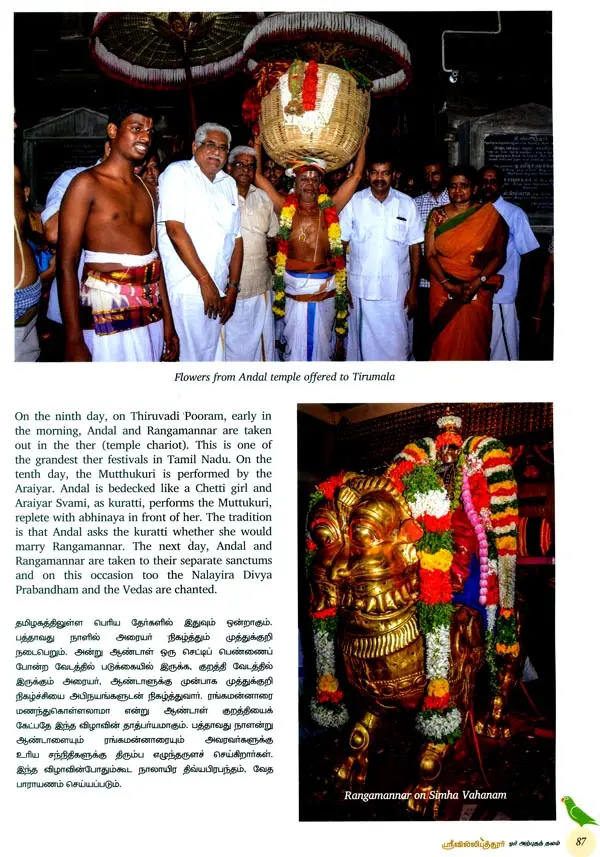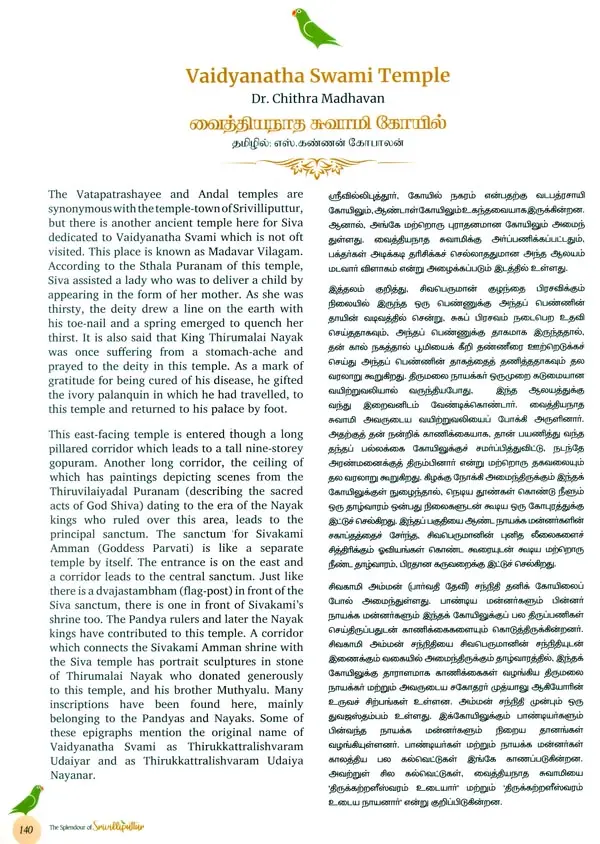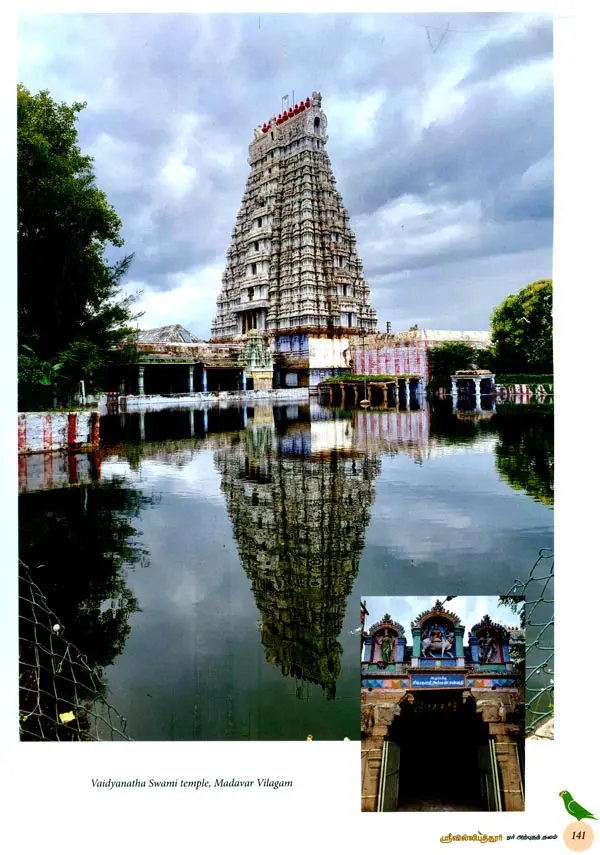
The Splendour of Srivilliputtur
Book Specification
| Item Code: | UAD490 |
| Author: | Chithra Madhavan |
| Publisher: | Universal Publishing, Chennai |
| Language: | English and Tamil |
| Edition: | 2022 |
| ISBN: | 9788195171835 |
| Pages: | 144 (Throughout Color Illustrations) |
| Cover: | HARDCOVER |
| Other Details | 12.00 X 8.50 inch |
| Weight | 830 gm |
Book Description
The first chapter of this book details the traditional story (Sthala Puranam) of Srivilliputtur, while the next is about the two famous Alwars connected with this sacred place- Perialwar and Andal, with special reference to the literary works of Andal, namely the Thiruppavai and Nachiyar Thirumoli. There is a chapter on the Amuktamalyada, a well-known literary work in Telugu by Emperor Krishnadeva Raya of the 16th century C.E.
The chapter on the architecture and sculptures of the Vatapatrashayee and Andal-Rangamannar temples gives the general layout of the two temples situated adjacent to each other and details about the various sanctums, images of deities enshrined therein, sculptures and paintings. Andal's parrot (kili) is famous, especially in the Srivilliputtur temple. Its symbolism, importance, material of which it is made and various other details are the content of a chapter focusing on the parrot. Around Srivilliputtur are some small shrines which are connected with the main temples in this town. These find mention in a separate chapter.
The numerous festivals which are celebrated for Vatapatrashayee and Andal-Rangamannar have been documented in detail in this volume as has the traditional ritual known as Araiyar Sevai which is an integral part of worship in Srivilliputtur. A few songs have been composed on Srivilliputtur and these have been highlighted in this book. There is a chapter on a literary work called Nacharu Parinayam in Telugu which is a Yakshagana on Andal's wedding, composed in the 18th century. A chapter exclusively for the inscriptions found in the Vatapatrashayee and Andal-Rangamannar temples provides a lot of information about donations by royalty and others, while the last chapter is about the various food offerings given to the deities in this sacred town. A brief write up about the Vaidyanatha Svami temple in Madavar Vilagam also finds a place in this volume.
Book's Contents and Sample Pages
